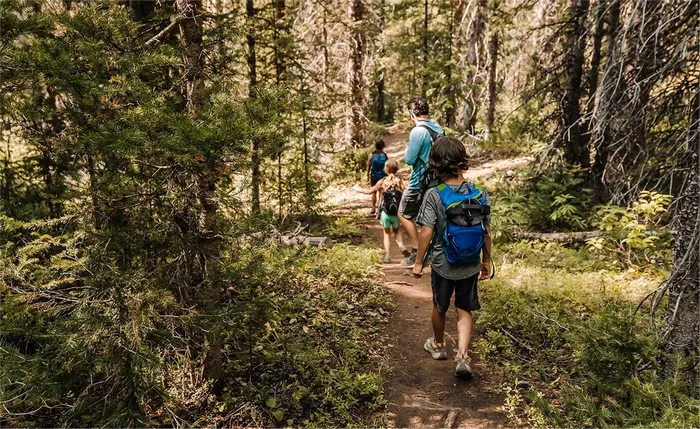Hiking is a fantastic outdoor activity that allows individuals to connect with nature, stay active, and explore new landscapes. Whether you’re a seasoned hiker or just starting out, one crucial aspect of hiking that can’t be overlooked is hydration. Proper hydration is essential for maintaining overall health and optimizing performance, especially when exerting yourself in challenging terrain and varying weather conditions. In this article, we’ll explore the importance of hydration during hiking adventures and discuss how much water you should aim to drink per day to stay safe and energized on the trail.
Understanding the Importance of Hydration:
Water is fundamental to the proper functioning of the human body. It plays a vital role in numerous physiological processes, including temperature regulation, nutrient transportation, joint lubrication, and waste removal. When you’re hiking, particularly in warm or high-altitude environments, your body’s water requirements increase significantly due to factors such as sweating, increased respiratory rate, and higher metabolic demands.
Dehydration, which occurs when your body loses more fluid than it takes in, can have serious consequences, ranging from decreased physical performance and impaired cognitive function to heat-related illnesses like heat exhaustion and heatstroke. Additionally, dehydration can exacerbate existing medical conditions and increase the risk of injuries on the trail. Therefore, maintaining proper hydration levels is paramount for enjoying a safe and rewarding hiking experience.
Factors Affecting Hydration Needs:
Several factors influence an individual’s hydration requirements during hiking:
1. Environmental Conditions:
The temperature, humidity, altitude, and sun exposure can all impact how much fluid your body loses through sweating and evaporation. Hotter temperatures and higher altitudes typically result in increased fluid loss and higher hydration needs.
2. Intensity and Duration of Activity:
The duration and intensity of your hike directly affect how much water you’ll need. Longer hikes and more strenuous activities require greater fluid intake to replenish what’s lost through exertion.
3. Body Size and Composition:
Larger individuals generally have higher water requirements than smaller ones due to differences in metabolic rate and surface area for heat dissipation. Additionally, individuals with higher muscle mass tend to have higher hydration needs than those with higher body fat percentages.
4. Fitness Level and Acclimatization:
Regular exercisers and individuals who are acclimatized to hiking or outdoor activities may have more efficient sweating mechanisms and better fluid retention, but they still need to stay adequately hydrated during their adventures.
Calculating Hydration Needs:
While there’s no one-size-fits-all answer to how much water you should drink while hiking, there are general guidelines you can follow to estimate your hydration needs:
1. Pre-Hike Hydration:
Start your hike well-hydrated by drinking water in the hours leading up to your adventure. Aim to consume at least 16-20 ounces (approximately 500-600 milliliters) of water 2-3 hours before hitting the trail.
2. During-Hike Hydration:
During your hike, strive to drink water consistently to replace fluid losses and prevent dehydration. A common recommendation is to consume 6-8 ounces (approximately 180-240 milliliters) of water every 20-30 minutes, depending on factors such as temperature, intensity, and individual sweat rates.
3. Post-Hike Hydration:
After completing your hike, continue hydrating to replenish fluid losses and aid in recovery. Drink water or electrolyte-rich beverages, and monitor your urine color to ensure you’re adequately rehydrating.
4. Adjustment for Environmental Factors:
Be mindful of environmental conditions and adjust your hydration strategy accordingly. In hot or humid weather, at higher altitudes, or during prolonged exertion, you may need to increase your fluid intake to compensate for greater fluid losses.
Signs of Dehydration:
It’s essential to recognize the signs of dehydration and take prompt action to address fluid deficits while hiking. Common symptoms of dehydration include:
1. Thirst
2. Dry mouth and lips
3. Dark-colored urine
4. Fatigue or weakness
5. Dizziness or lightheadedness
6. Headache
7. Reduced urine output
8. Confusion or difficulty concentrating
If you experience any of these symptoms while hiking, stop and rest in a shaded area, drink water, and cool down if necessary. Severe dehydration requires immediate medical attention and may necessitate the administration of fluids intravenously.
Conclusion
Proper hydration is a fundamental aspect of safe and enjoyable hiking experiences. By understanding the factors that influence hydration needs and adopting a proactive approach to fluid intake, you can optimize your performance, reduce the risk of dehydration-related complications, and make the most of your time on the trail. Remember to stay hydrated before, during, and after your hike, and listen to your body’s cues to ensure you’re meeting your individual hydration requirements. By prioritizing hydration, you’ll be better equipped to tackle any adventure that comes your way and reap the countless benefits of exploring the great outdoors.

